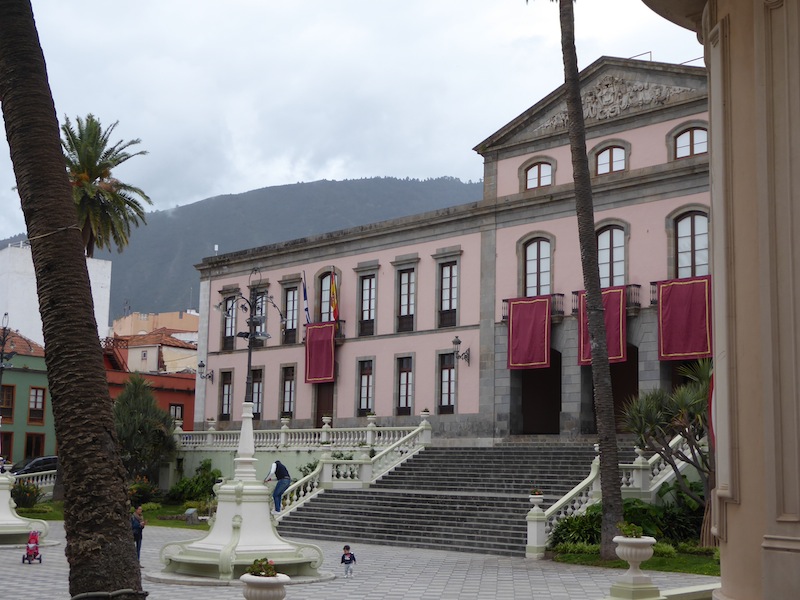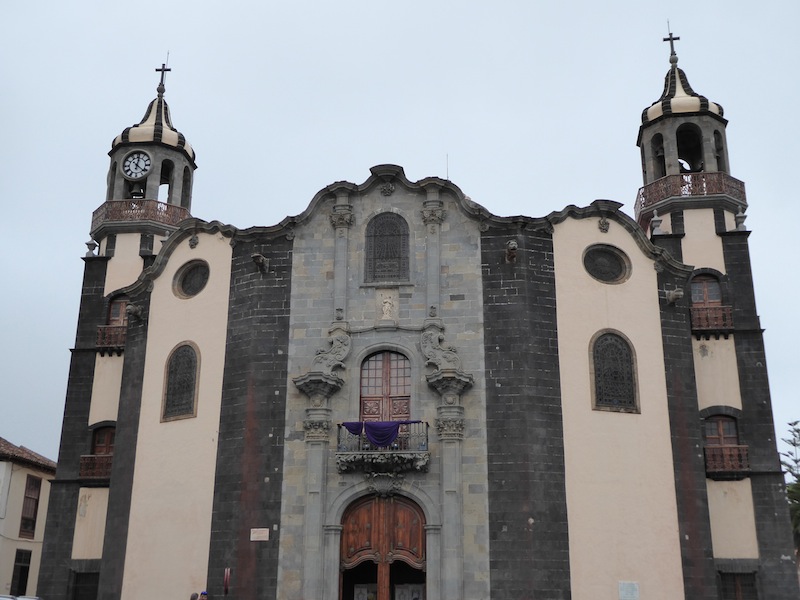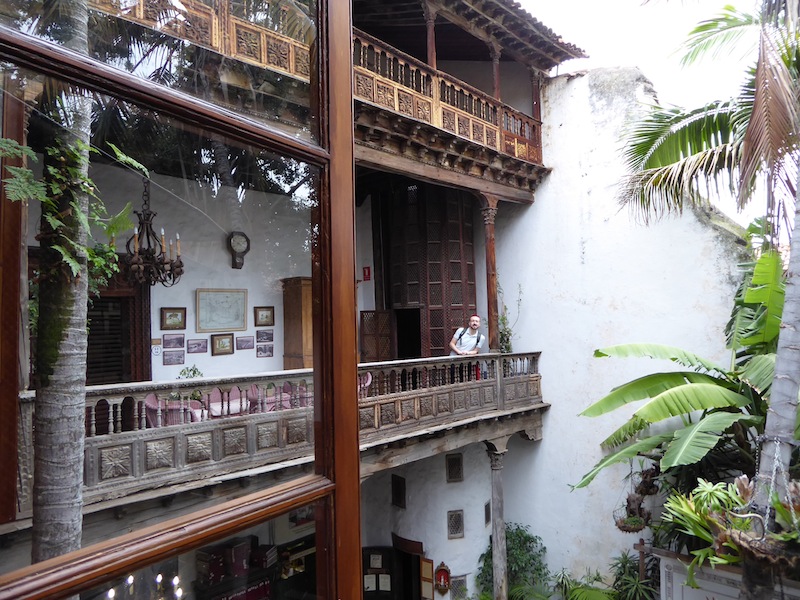We went all the way to Tenerife for winter sun and relaxation only to find a depressing layer of cloud that refused to budge from the volcanic mountains around Puerto de la Cruz. So while the Hotel Botanico pool may have looked inviting, it was a bit too cold to sit out, read and swim – at least for the first few days.
So a quick flick through our trusty Lonely Planet guide saw us taking a quick bus trip up the hill to the town of La Oratava. Said book had described it as ‘one of the loveliest towns on Tenerife, and one of the most truly Canarian places on the Canary Islands’. Puerto de la Cruz actually began life as its port.
We trundled out of our resort on the bus, past plentiful banana plantations, crossed the motorway and within minutes were bang in the middle of the grim La Oratava bus station. Around and about, the town didn’t look particularly historic. Wide roads and 20th century apartment blocks clung to the steep hills, looking much like any other average town on the island. Being a Sunday, it was also deathly quiet and the tourist office was closed. Not exactly promising…

But it’s the heart of town, enveloped by the modernity, that’s the jewel in the crown. We walked on up to where the historic colonial architecture begins, at the shaded Plaza de la Constitucion and the pretty San Agustin Church. A restaurant housed in a grand mansion, atop some fine gardens, overlooks the square.
Next door are the Jardínes del Marquesado de la Quinta Roja – 18th century French-style gardens laid out on terraces cut into the hillside. Crowning it is a marble mausoleum where the marquess is supposedly interred, although there’s some doubt as to whether it did end up being his final resting place. Either way, there were great views down to Puerto de la Cruz and the sea.

Tufts of low cloud scudded around the hills around us as we walked deeper into the old town. We wandered up and down cobbled streets and through little squares, lined by sturdy colonial mansions dating from as far back as the 16th century, many of them sporting the elaborately carved wooden balconies that are such a feature of historic Canarian towns. Clearly some of the locals had made good money from the fertile, volcanic soils of Tenerife over the centuries, exporting wine, tomatoes, sugar and bananas, investing the profits in grand homes, majestic churches and proud civic buildings. But on this 21st century Sunday precious little was open.
An exception was the Casa de los Balcones, a 17th century mansion built around a sheltered courtyard, dominated by a giant wine press. It was all a bit tacky on the surface, with a shop full of the cheapest and nastiest tourist tat, and there were displays of traditional handicrafts such as lace-making (again with the aim of parting us from our cash).

But beyond the ground floor there was a delightful building to explore. The wooden balconies are a real treasure and on the first floor, reached via a spiral staircase, we visited the historic rooms decked out in antique furniture, art and other paraphernalia – as well as some dodgy mannequins. We weren’t allowed to go into the rooms – the kitchen, larder, dining and living rooms as well as a bathroom – but we could see enough.
Black and white photos on the walls showed the town and the house over the last century or so, giving us sight of the people who had lived and worked there. We were the only ones exploring this part of the building – most folk were more interested in the Chinese-made crap in the shop.
Over the road was another historic mansion but it too was full of more shops selling such quality items as fridge magnets. However, there were at least some local handicrafts being made and sold. It was all rather depressing and seemed to be operated by the same lot as the main house.

We wandered along more streets, admiring the fine architecture. The churches were busy with worshippers, especially the weirdly baroque example of La Conception that looked more like a fortress than a place of worship. Beyond were some attractive modern developments as well as dereliction and boarded-up shops, a sign perhaps of Spain’s economic problems of recent years.
Climbing up and down the hills, we needed some refreshment before getting the bus back. So we stopped for coffee in a cafe locked in a 70s timewarp, served by a man who couldn’t be further away from the concept of good customer service if he tried… It’s what memories are made of.

